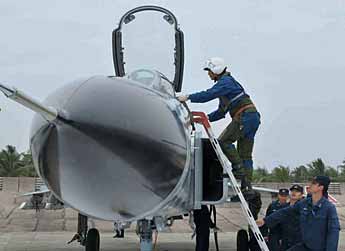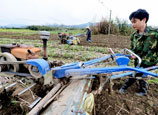
The Long March-11 is also in development, China's first launch vehicle using solid fuel, which is expected to make its first launch before 2016.
"The development of Long March-11 will greatly improve China's capabilities to rapidly enter space and meet the demand for emergency launches in case of accidents," he said.
The carrier rocket will be easy to operate and cost-efficient to launch, and it can be stored for long periods to launch at short notice.
"If a major earthquake - like the one that rocked Wenchuan of Sichuan province in 2008 - strikes again, we will be able to quickly send satellites into space that can take photos of the devastated area and help with rescue work," Liang said.
Time to mature
Liang expects the next generation of carrier rockets will operate together with earlier models to serve space missions for the next 10 to 20 years.
"A new launch vehicle will not be fully reliable until it carries out at least 10 missions where hidden problems can be exposed and fixed. Sometimes, even after a model has carried out many missions, deeper technical problems will not emerge until it encounters special situations in space," he said.
Time is also needed for the new generation of launch vehicles to become competitive in cost, too, he added.
By then, China's launch systems will be able to send payloads from 1 to 25 tons into three levels of orbit, ranging from 200 km to 35,000 km altitude, and meet the demands of China's short- and mid-term space programs.
But to meet long-term space goals, China will need to develop a rocket with a takeoff thrust of 3,000 tons, three times that of Long March-5, which will be able to send men to the moon.
Research on a heavy-thrust launch vehicle has been carried out in the past years. Scientists visualize a rocket with a diameter of at least 8 meters, able to send a 100-ton payload into low earth orbit.
The academy aims to have the heavy-thrust rocket project approved by the government under the 12th Five-Year Plan period (2011-15), Liang said.
"If approved, China will stand in the same line as space powers such as the United States and Russia regarding launch vehicles, which is the precondition for all space activities," he said.

















 5.5-magnitude quake hits China's Yunnan, 30 injured
5.5-magnitude quake hits China's Yunnan, 30 injured


![]()
